Ever wondered what life backstage of a production is like? I dived into VCU Theatre’s production of “Rent” and learned everything about what the backstage experience really is. I took photographs, interviewed the actors, and got to know all aspects of VCU theatre. I spent the last three weeks observing, getting to know the actors, figuring out all the secrets of putting on this grand size of a production, and finding all the small and unseen gears that make a show like this run. Keep reading to find out more about the charm and vitality of “Rent.”
The Actors and Actresses
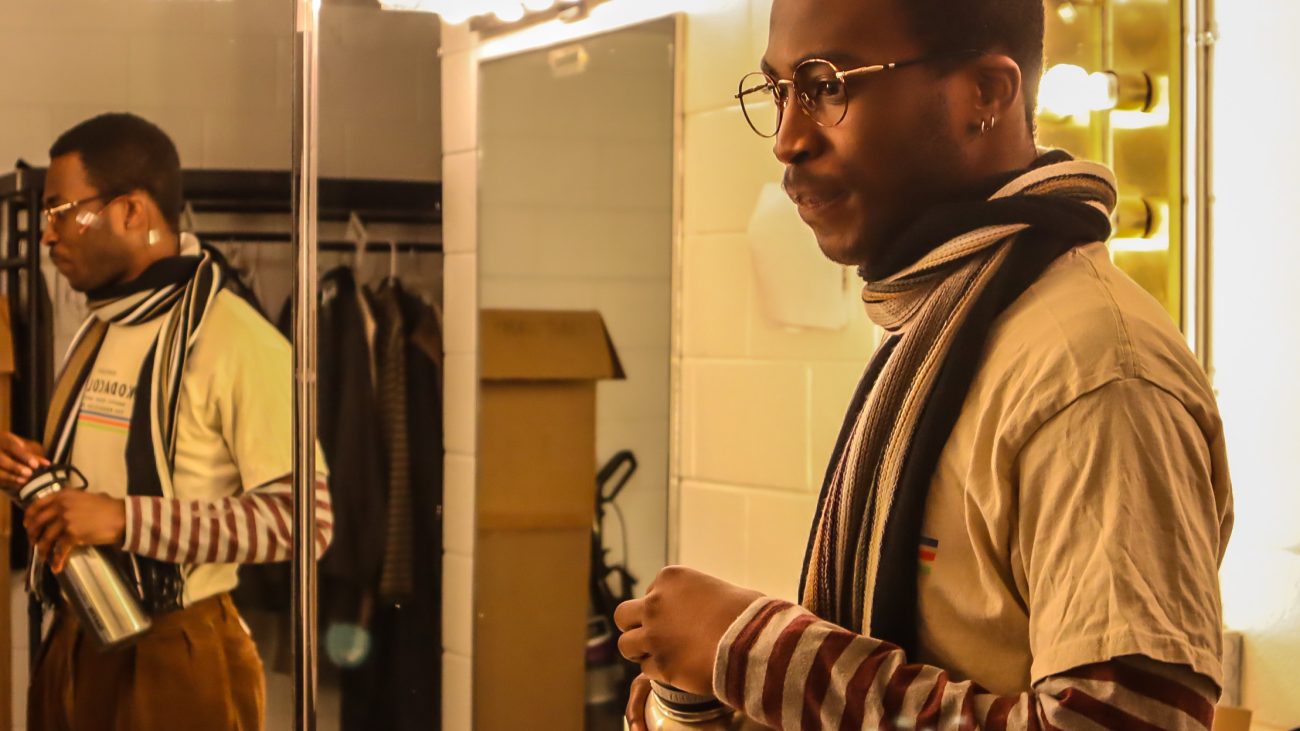
Ever wondered how actors prepare to step into their roles? Pictured here is Malcolm Holmes, playing the part of Mark, all ready for the beginning of the show in his costume and mic. Before the show, Holmes goes into the stairwell and listens to music while getting into his body physically and spiritually. Curiosity sparked while interviewing Holmes about him stepping into and preparing for the role of Mark. He commented “I’d say for Mark, personally, a lot of people who play him try to play him in this very ‘self absorbed’ and ‘above all of this’ way, but I feel like in this production, I got the chance to explore the similarities between me and my character.” Holmes truly lights up the stage with the way he fully stepped into character as Mark, one of the leads in “Rent.” Without Holmes’ personal portrayal of Mark as a character, the whole production of “Rent” would be lopsided. But Holmes isn’t the only actor who has an influential character within the production. Angel is probably one of the most difficult characters to step into in “Rent.” Continue reading to find out how Angel comes to life on stage.
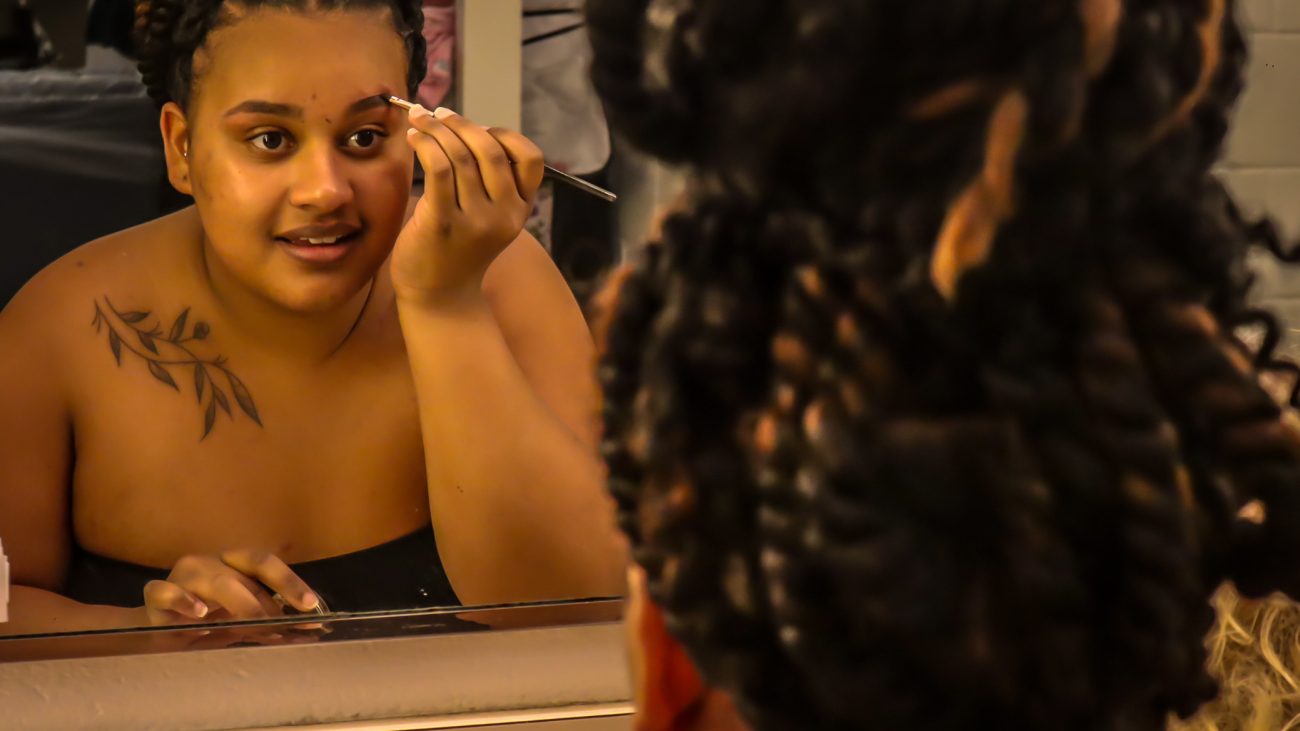
Mya Hall Jiménez, playing the part of Mimi, gets her makeup on at call time for a show. Hall Jiménez told me all about her profound relation to her character in “Rent.” “I kind of created the Uta Hagen [acting method], the 9 questions. I created a whole background for Mimi. My father died when I was young of drug abuse, so you know I grew up around drugs and I already had that exposure so it was easy to play a drug addict.” Mimi, such a demanding and stimulating character, needs an energetic and hard-working actress to step into her shoes. Hall Jiménez did the part of Mimi extreme justice in this production by backing the hardships of drug addiction with her own experiences. It’s inspiring to see such confidence cross over Hall Jiménez’s face when she collides herself with her character and step into the stage lights.
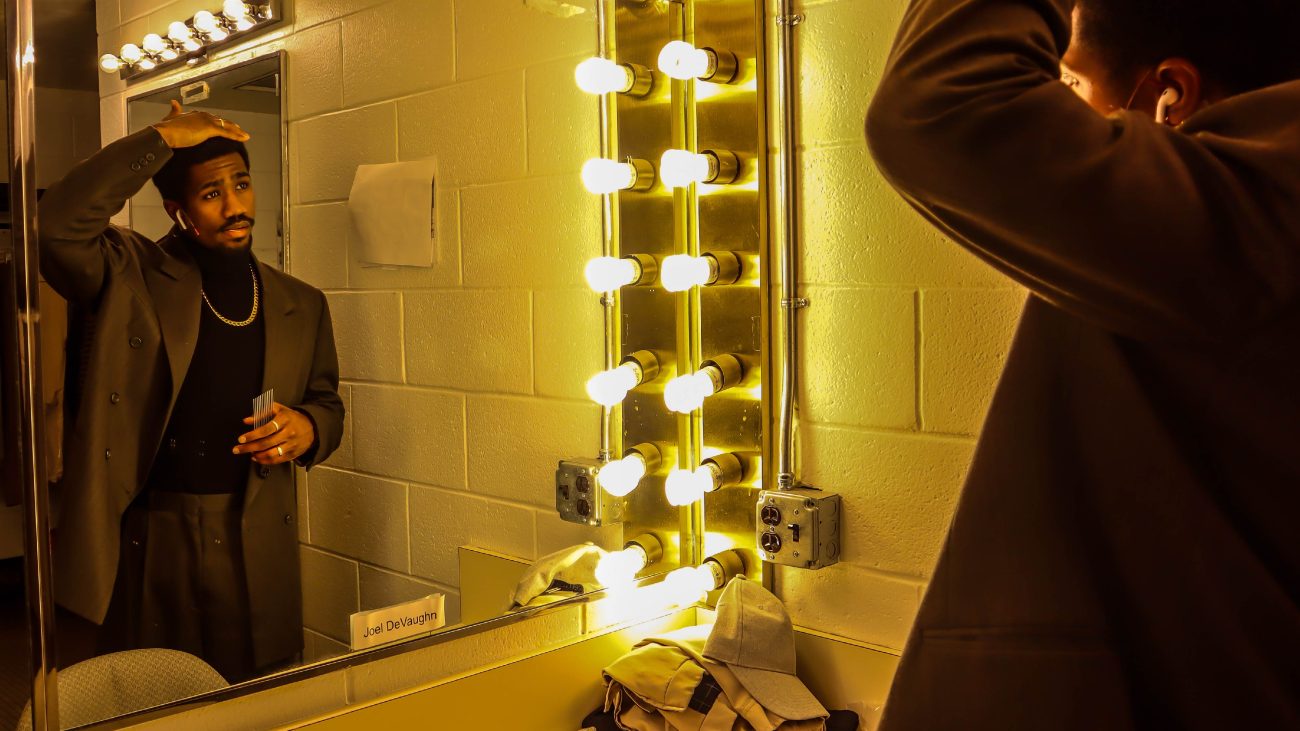
Joel Devaughn, playing the part of Benny, prepares for the top of the show in the dressing room. Pictured here is him already in costume and fixing his hair. Benny in “Rent” is considered the “bad guy.” When asked about how he feels about playing the antagonist, Devaughn responded
“It is taxing, I would say. There is a lot of focus on stepping into the character, but there is not a lot of focus on stepping out of the character. And for someone like Benny who I’ve been playing like a nihilist and so stepping out of it has been a challenge. What I’ve been doing is an act of service to the rest of the cast. I play the antagonist. I get them to inspire hope amongst the rest of each other by playing the worse guy. Benny is interesting because every antagonist has their own set of beliefs and morals and I think Benny does as well, but for most of the show he’s really just there to cause chaos. Doing that, I say it’s taxing because I’m not Benny, it’s a front.” Devaughn commits to his role like no other. Without him, there would be no obstacle for the cast to overcome. Without him, there would be no “Rent.”
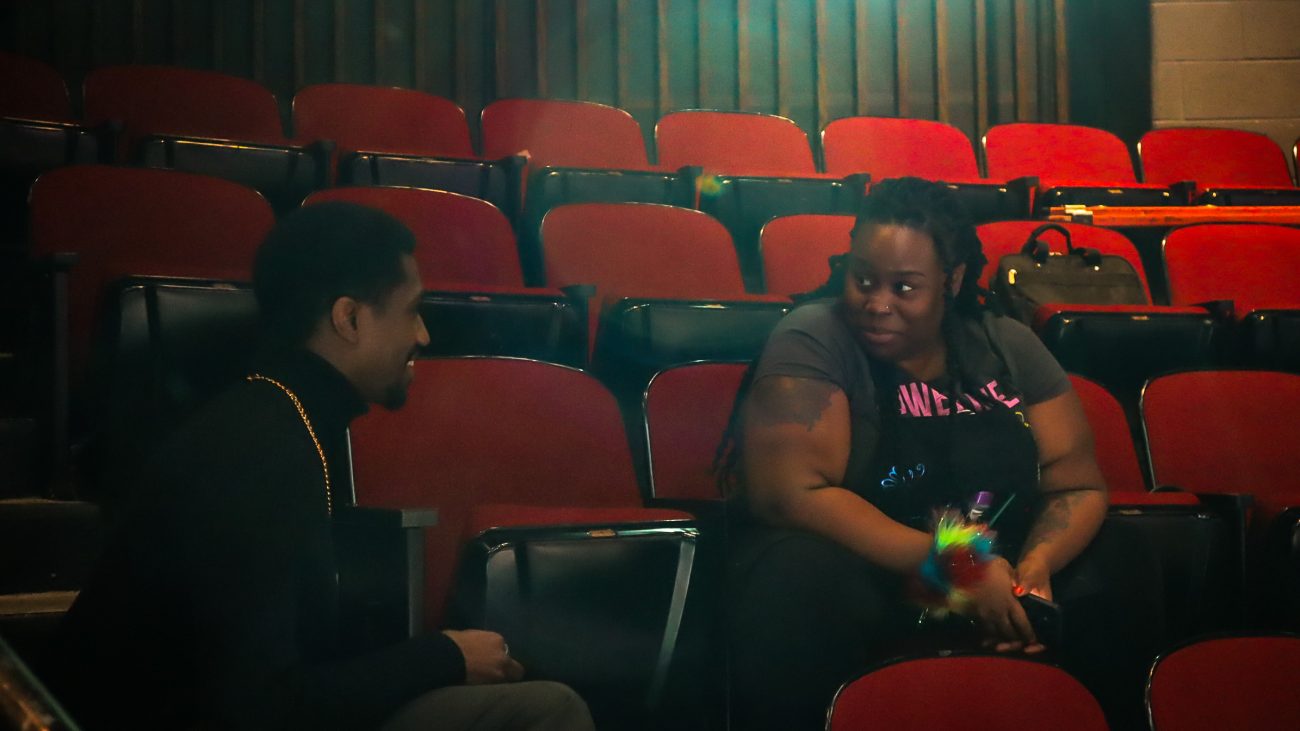
Director, Desirée Dabney and actor, Joel Devaughn, sit in the house while awaiting the start of the rehearsal. During tech and dress rehearsal, lots of actors and crew members spend time sitting around waiting for their next cue. It is common for a rehearsal to last 12 hours. Therefore, people tend to spend the extra time connecting with their fellow artists and mentors. Everyone on the cast and crew of “Rent” truly looks up to Dabney as a director and professional and she has given this show the importance it deserves.
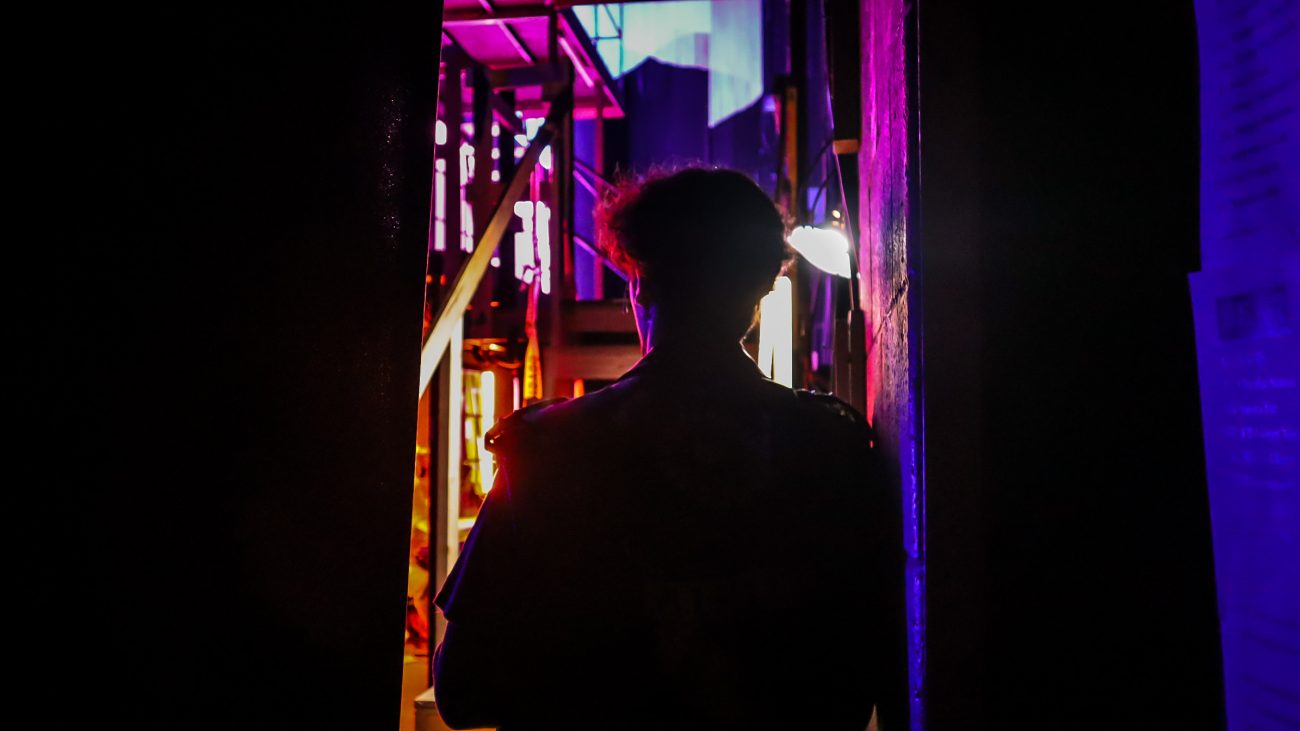
Pictured is Lukas D’Errico, playing the part of Roger in “Rent”. Here is him waiting in the wings for his cue to enter the stage. D’Errico stated to me in an interview when asked about his pre-show rituals and warmups: “Obviously there is a vocal and physical warm up. I have created a comfortable vocal warm up. I do have a physical warmup that I’ll forget to do. I think one of my favorite things about being in the performance part of a show is like, I just love the dressing room lights. Something about that vibe, like a pre show getting ready type of energy. If I don’t sit in front of this specific type of lighting and do my makeup, something is off.”
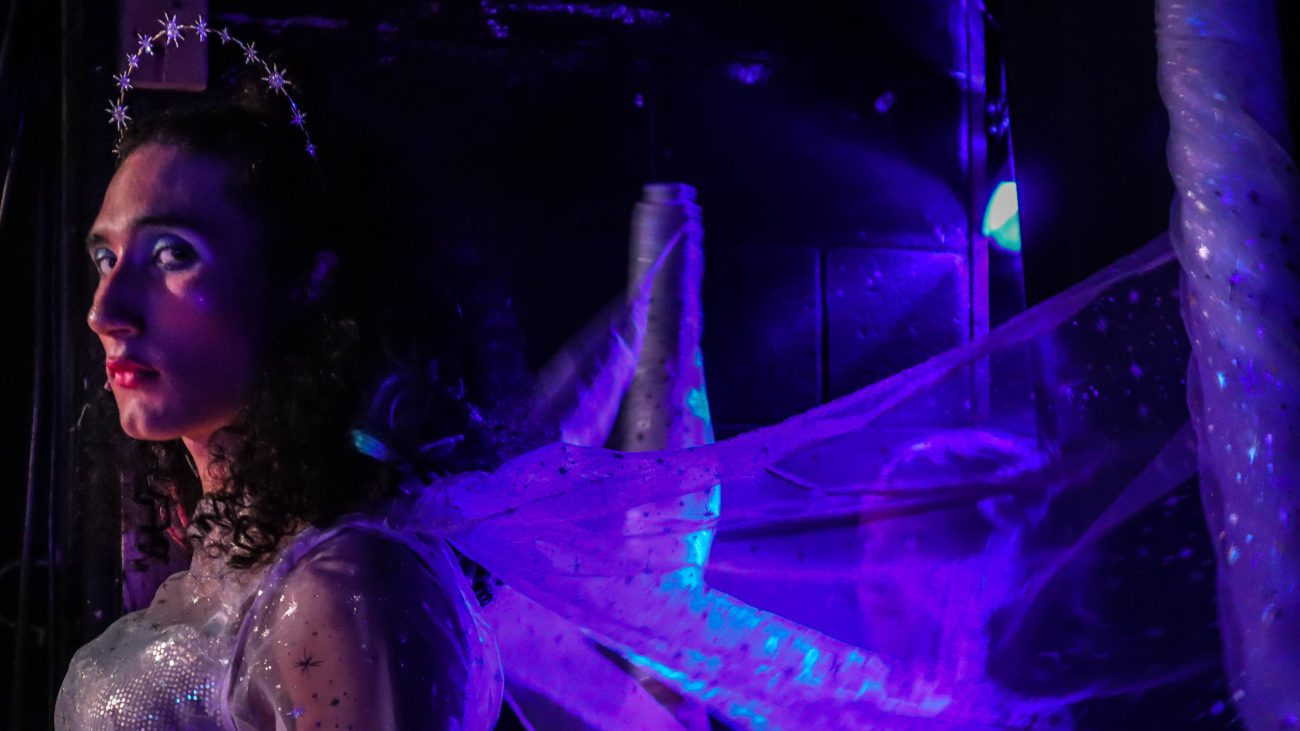
Jacie B. Davila, playing Angel, is waiting for the death scene in the wings. Pictured here is her getting into character. To get into character, Davila says she “usually vogues in my room.” By stepping into the role of Angel, Davila says “Angel is kind of like me in real life, very lively, really dresses like me. A lot of Angel is basically me. Angel is probably more confident than me. It’s basically just ‘be me’ but times ten.” Davila has clearly found the similarities between themself and their role.
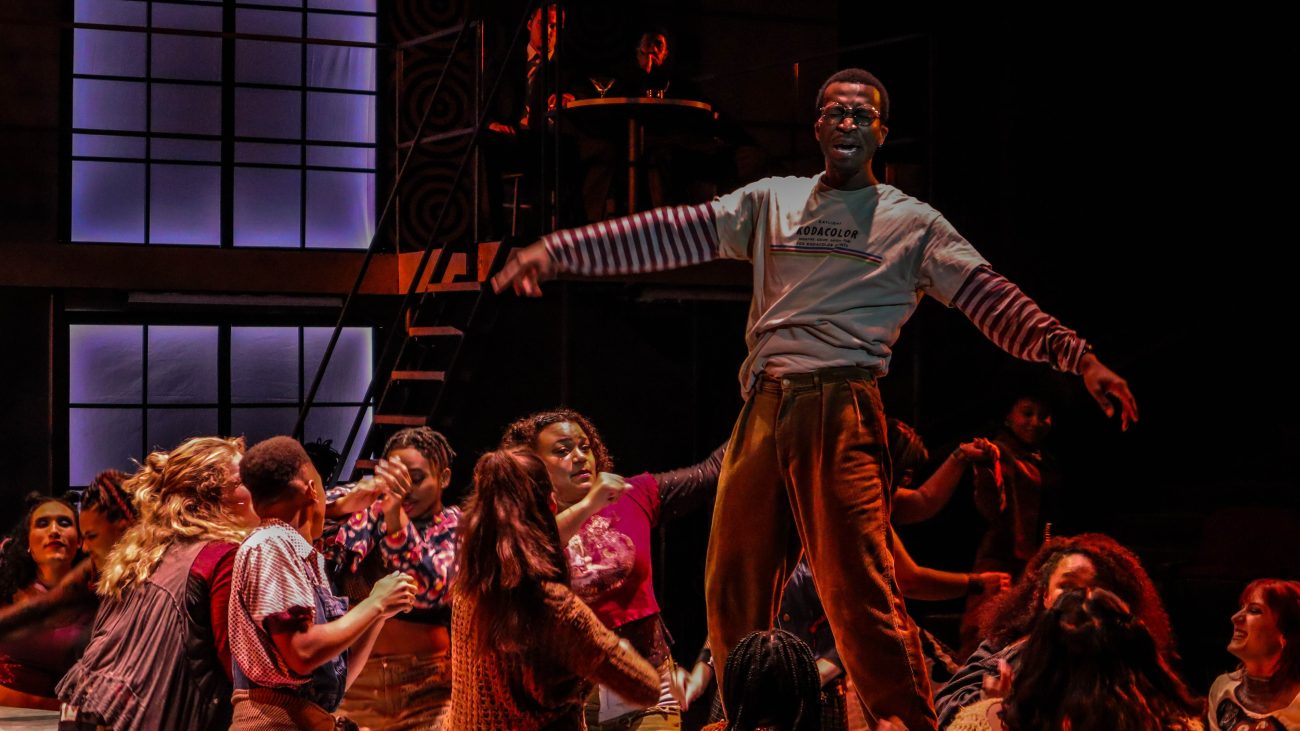
Act one of “Rent” ends with the stunning song “La Vie Bohème”, which is the name of the opera “Rent” is based off of. Maureen, a character in “Rent,” holds a show to bring awareness to the problem surrounding this vital community of AIDS victims in New York City in the 90’s. Nicole Boisseau, an ensemble and swing member in the production, stated to me “Rent as a show is really using art for the good of humanity. Maureen’s show starts off as a joke but towards the end it ends up being a protest. Seeing so many stories represented is so awesome and so important.” This is what “La Vie Bohème” and “Rent” are all about.
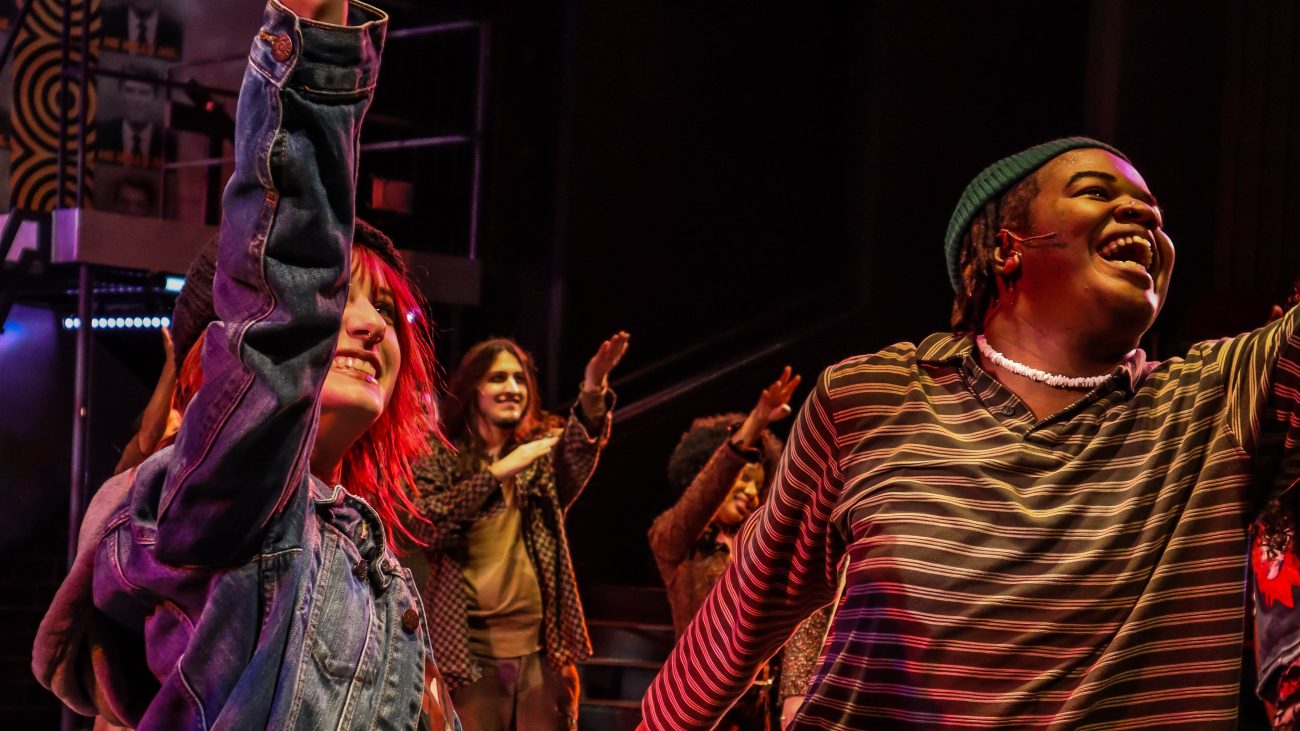
Jessica Pain, ensemble cast member/dance captain, and Nesziah Dennis, playing the part of Tom Collins, cue to the backstage crew during bows. Pain has the fastest quick change in the entire production of “Rent.” She gets changed out of an entire business outfit into a hazmat suit in 12 seconds! Thanks to five dressers playing a vital role in changing her, she is able to get on stage in time for her scene.
Dennis had a conversation with me about how he transitioned into his role as Tom Collins. “I pulled a lot from personal experience of being someone who is black and queer,” He stated, “and know about being alienated on multiple levels. I don’t think [Collins’] blackness or his queerness is determined when one outshines the other. Collins is a character whose inter-sexuality needs to be treated as such. Desirée Dabney [director] and Wes Seals [choreographer] lived during the time, so I listened to their experiences and put it into one big blender.” It’s fascinating to see how an actor dives into their character and then brings it to life on stage. Dennis did a fantastic job in bringing justice to the role of Tom Collins in “Rent.”
The Backstage Crew
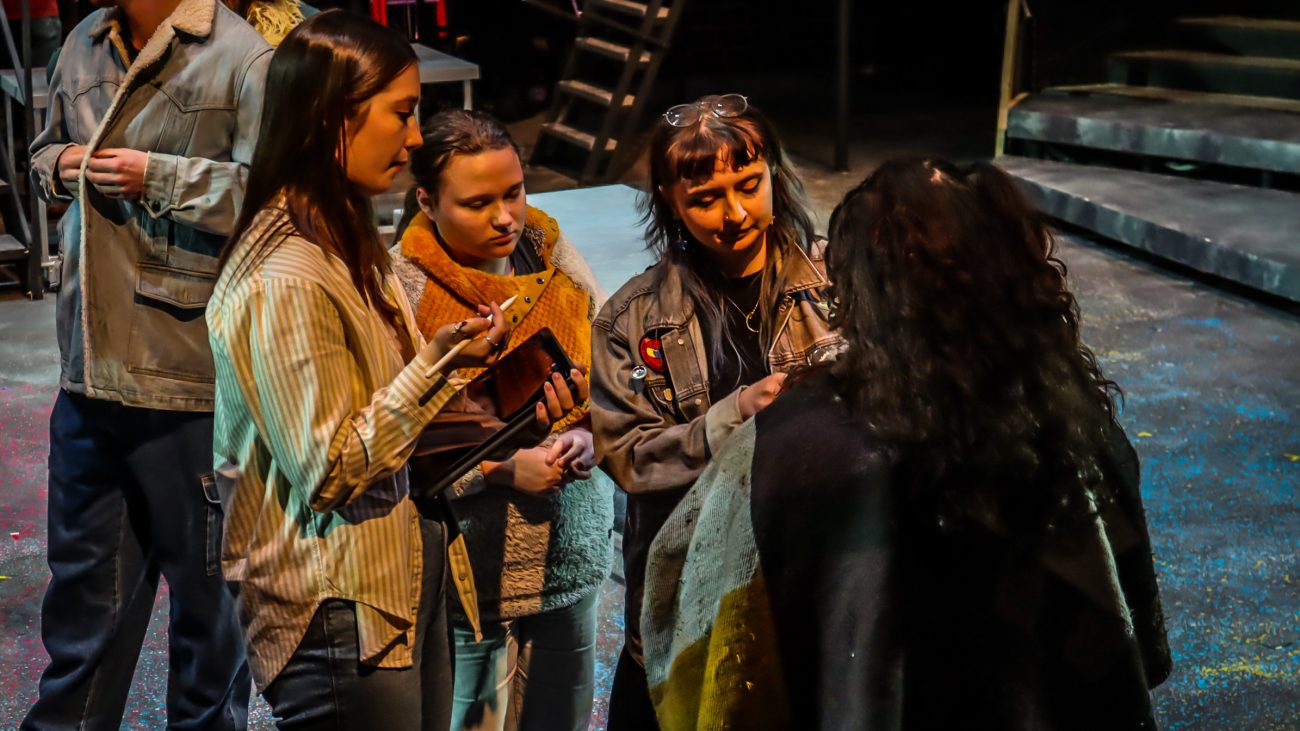
The costume design team of “Rent” (from left to right) Sarah Minor, Debbie Berghahn, and Kasey Brown are helping fix Belén Tarifa’s costume. During every show, at least one to two costume pieces break in some sort of way. The costume team spends their mornings doing laundry, getting stains out, sewing on patches or other decorations, and fixing rips and zippers and snaps. Often you can find one of them backstage blow drying slacks dry or hand washing jeans.

These costume pants are an AIDS memorial to people who have lost their lives to the illness. The name at the top on the waistband, Mark Sick, is my great uncle who died in New York City in the 90s due to AIDS. The plot of “Rent” is based around this epidemic. Nesziah Dennis, playing the role of Tom Collins, communicated to me that “I think ‘Rent’ is a protest. It is a form of resilience. I think it is a very in your face representation of the wrongs in America. The bad, the ugly, the pretty. For me it is a show I feel so seen in.”
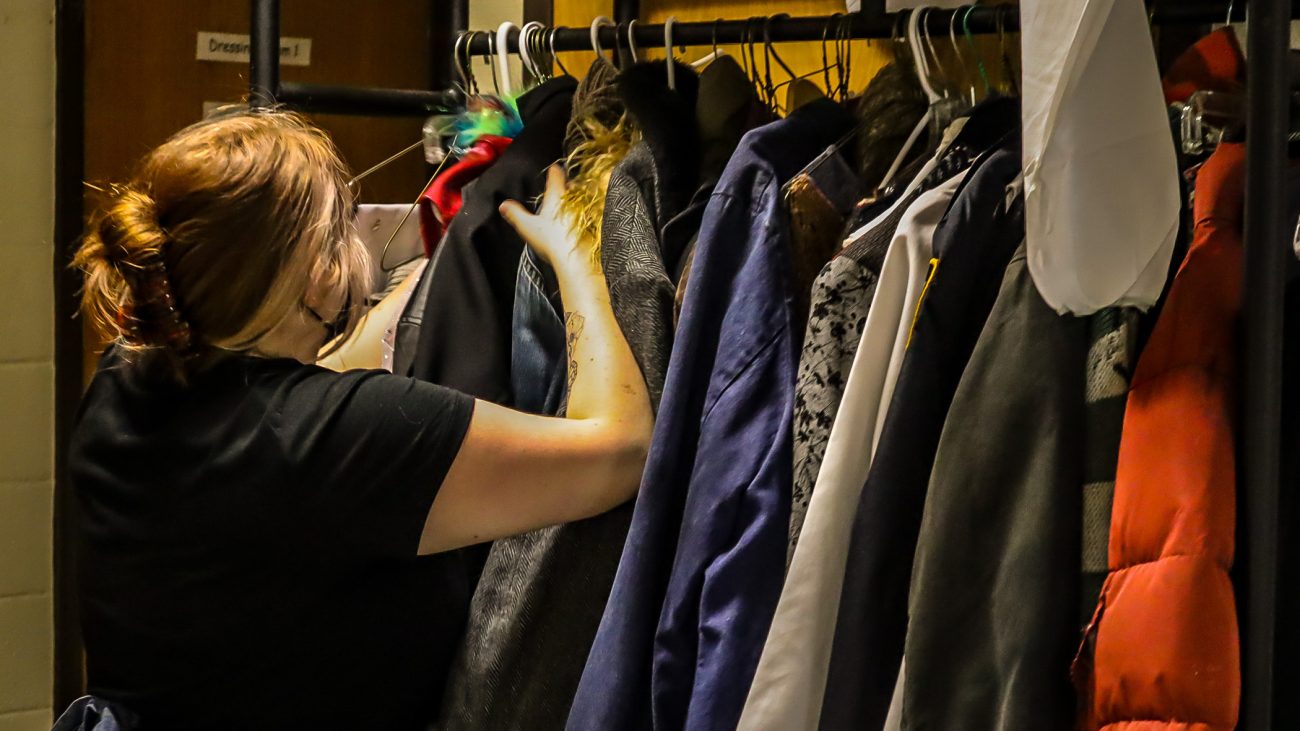
Melanie Kiser, wardrobe supervisor, organizes the quick change rack before the start of the show. The quick change rack sits backstage during the show and the wardrobe team and entire cast interact with it throughout the show’s costume changes. Without costumes, the actors would have no character to “physically” step into. Miciah Thomas quoted to me that before a performance, all the actors stand in a circle and physically connect with their character. “We do a group step into our character.” Thomas says, “We close our eyes and think about who we’re playing, and see them in our head, and step into them physically.” This is vital for the show to run smoothly and for the audience members to feel the living, breathing characters performing in front of them.

Kasey Brown, costume designer, fixes a last minute adjustment for an actor’s costume. As I stated previously, costumes have a lot of stress to go through during a performance. Many times there are rips or stains in certain pieces. After every show, the costume team gets together and writes down all their notes for the day and the next morning they come into the theatre bright and early to fix everything before the next performance. They truly put in the hours and resilience everyone needs to work in such a difficult career that theatre is.
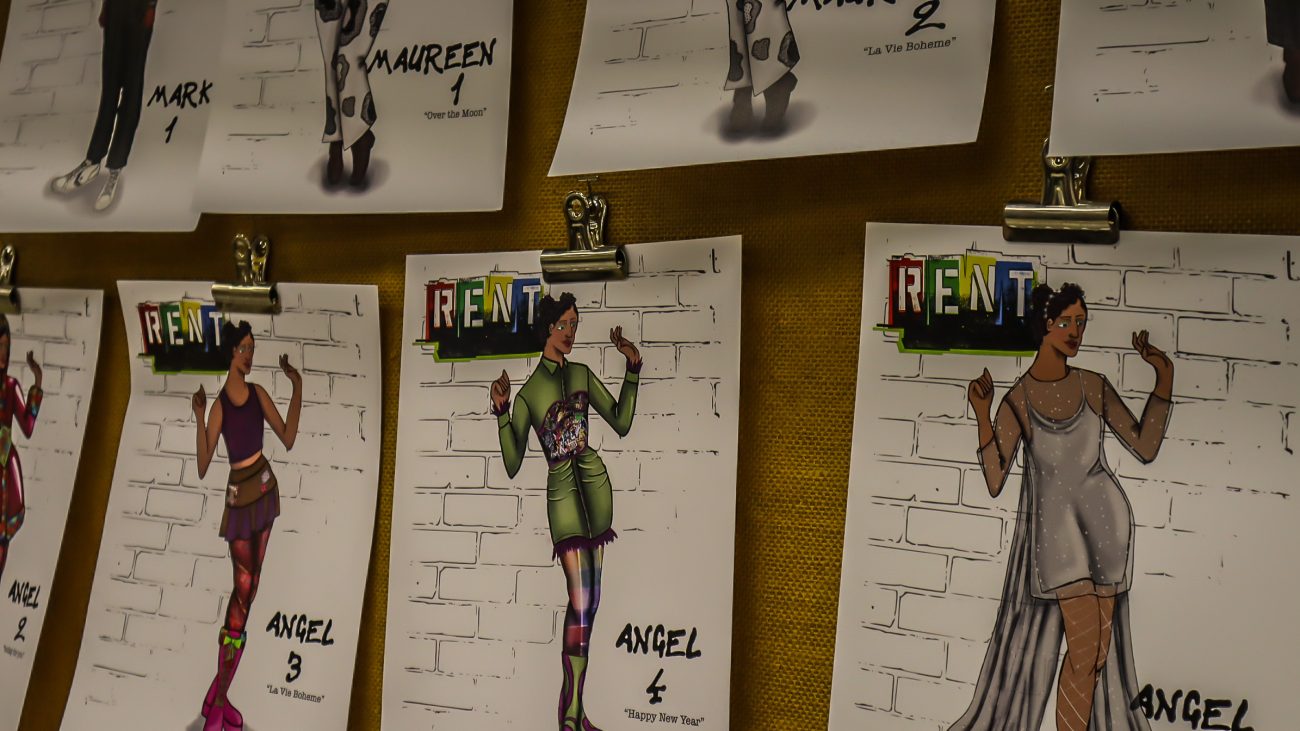
The costume renderings hang on the costume shop wall. Drawn and designed by Kasey Brown. Brown is VCU’s one and only graduate costume design major. Previously, she designed “Gross Indecency” in the Fall of 2022. Brown works collaboratively with all members on the design team including, the director, the set designer, lighting designer, sound designer, and all of the actors. She is in charge of designing everything from the clothes the actors wear to the jewelry to the hair and makeup. Brown quoted to me about how her designs differed from the typical broadway version of “Rent” by stating “The biggest thing is I made Angel a trans woman. As a team we collaborated and made that direction. It’s more modern and probably what the intention was. In my opinion it fixes one of the biggest problems in the show. The big problem is they call her a drag queen and a cross dresser when she IS a trans woman.” Brown is very talented and deserves all the praise she has received for her work in “Rent.”
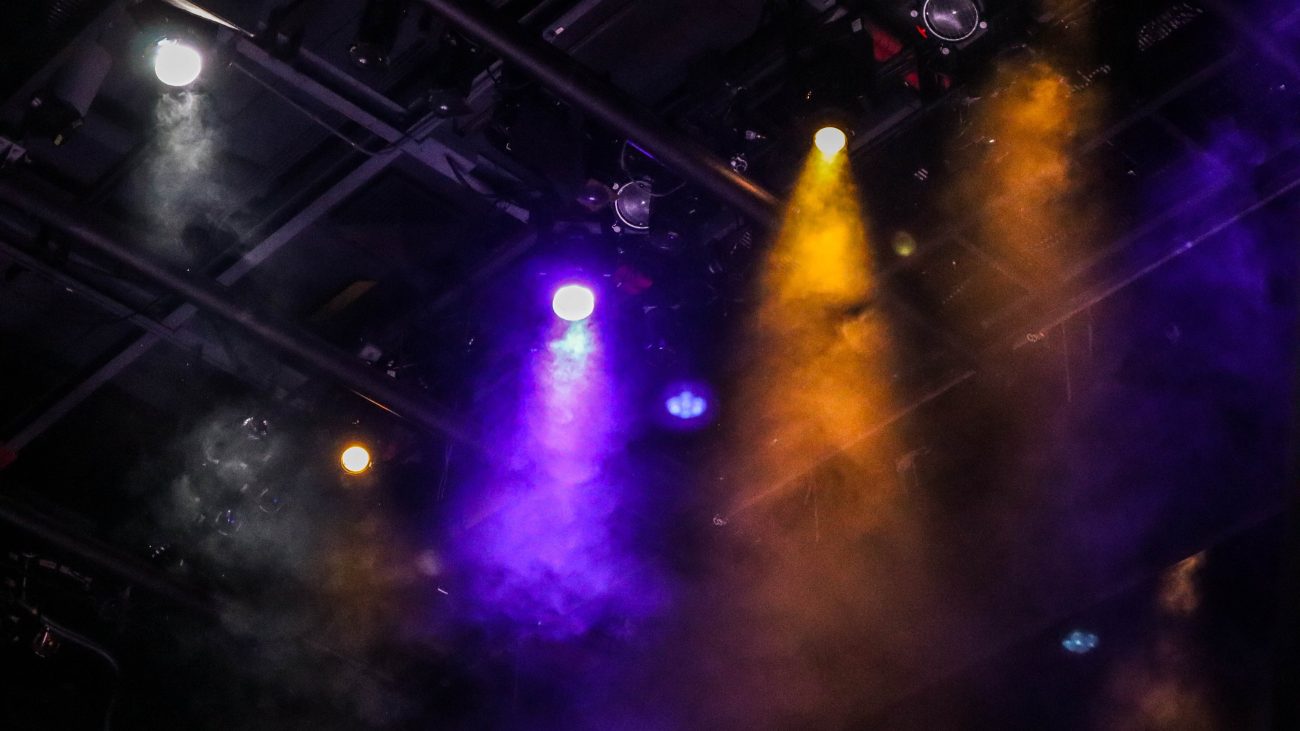
This production of “Rent” would not be possible without the lighting crew. The lighting was designed by BJ Wilkinson and assisted by James Hooper. Lighting is very important in a live production because it determines the mood the audience members should feel. It can also be vital in providing the time or season the show is placed in. For example, in “Rent,” the show is set around Christmas time. The lighting team incorporated lots of reds and greens to provide the cheery season mood. The lighting team also used oranges and reds to show fire during parts of the show.
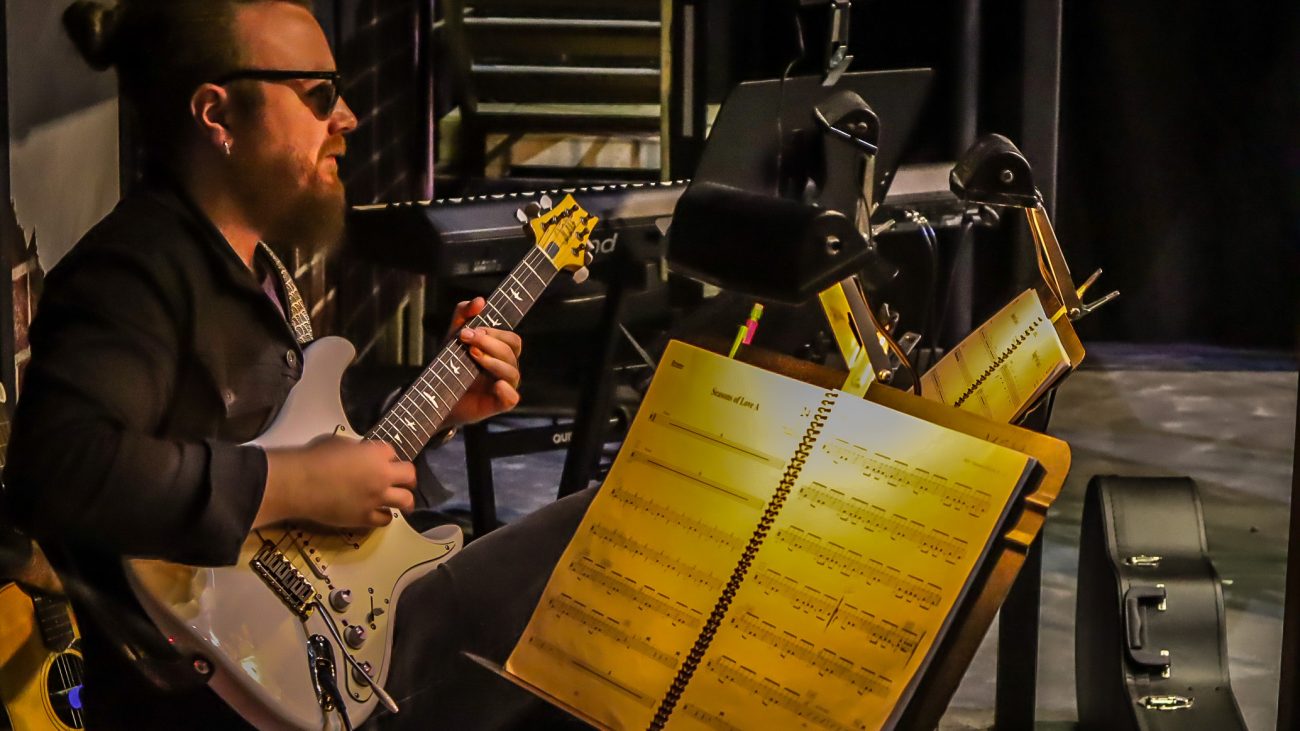
Music is a very important aspect of live musical theatre. “Rent” contains mostly songs with few actual lines. The musicians of “Rent” are caught on stage playing music constantly throughout the entire 2 ½ hour show. So thanks to musicians like Forrest Link playing the electric guitar, live music is possible in “Rent.” There is a certain type of charm added with actual instruments playing in the moment alongside the singers.
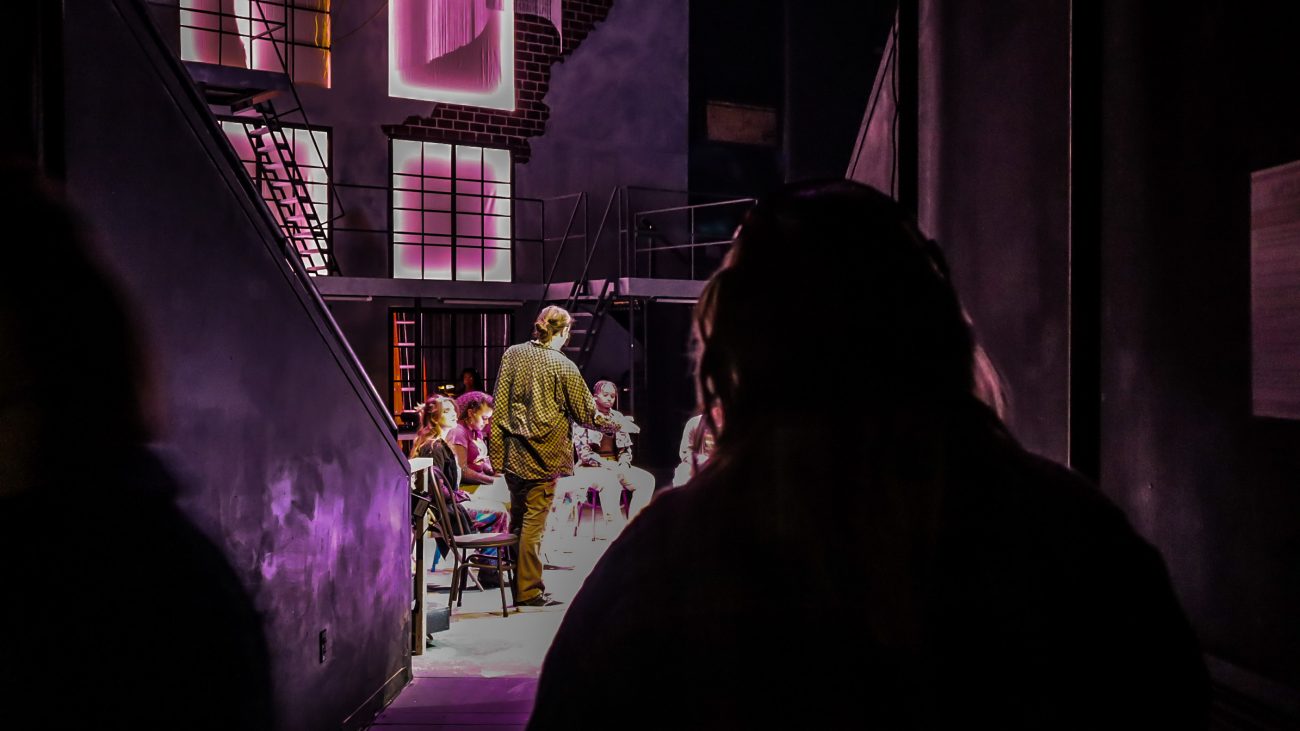
Hope Fuller, assistant stage manager, watches the performance to report cues in her mic for all of the running crew to hear. Fuller watches the house and determines when the house opens for the audience, when actors get into places, when the show starts, and when intermission ends. Without Fuller, the show would definitely NOT go on.
True talent shined on Hodges Stage from April 21st – 30th. With almost every show being completely sold out, the cast and crew can only hope you bought your tickets in time. Congratulations to every stitcher and every painter, to every line memorized and every guitar strung, to every eight step counted and every hair piece pinned in place; the show was a generous success and everyone involved should be proud of their immense work.

